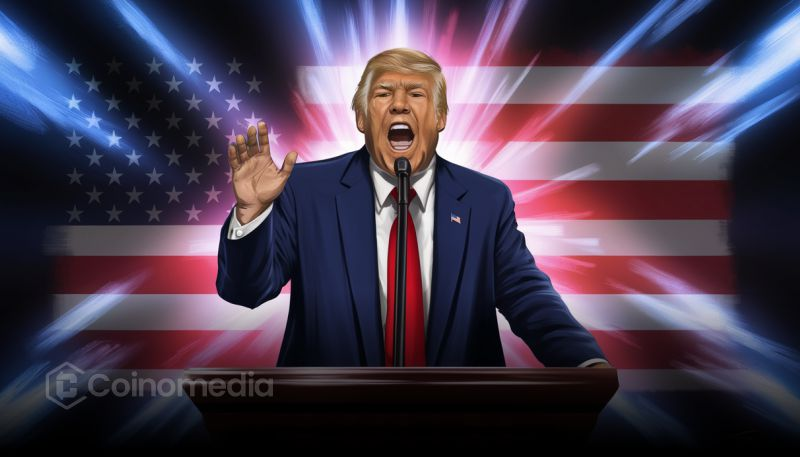Event Background: Accelerating the Politicization of Digital Assets
On March 21, 2025, President Trump will deliver a speech at the New York Digital Asset Summit (DAS). This marks the first time an incumbent U.S. president publicly outlines a national strategy for digital assets. The speech will focus on three core issues: Strategic Bitcoin Reserves (SBR), the Stablecoin Regulation Bill (GENIUS), and adjustments to the crypto market regulatory framework, signaling that cryptocurrencies have officially entered the highest political agenda in the United States.
Trump’s shift in stance is particularly significant—from calling Bitcoin “air” in 2020 to promising “to defend crypto innovation” during the 2024 campaign—reflecting the crypto industry’s growing political influence. The summit has attracted leading companies such as MicroStrategy and Ripple, and concurrently, the White House Digital Asset Advisory Committee has been established to promote public–private collaboration.

Strategic Bitcoin Reserves (SBR): A New Path to Hedge Against Dollar Risks
In his speech, Trump will detail the construction logic of the Strategic Bitcoin Reserves (SBR) for the first time: the U.S. government will accumulate Bitcoin through confiscated illegal crypto assets (such as proceeds from dark web crimes) rather than directly purchasing new tokens. According to a proposal by Senator Cynthia Lummis, the U.S. plans to reserve 1 million BTC over the next five years (currently valued at approximately $87.4 billion), positioning it as “digital gold” to hedge against dollar credit risk.
This strategy carries both economic and political intentions:
- Economically, Bitcoin’s scarcity and anti‑inflationary properties can enhance the resilience of the national balance sheet;
- Politically, Trump aims to garner support from Silicon Valley capital and young voters, particularly as 37% of millennials hold crypto assets.
However, Democratic lawmakers have questioned the plan as “using public resources for political speculation,” which may trigger judicial scrutiny.
Stablecoin Legislation: The GENIUS Bill Reshaping the Industry
At the same time, the U.S. Senate passed the “2025 Stablecoin Guidance and National Innovation Act” (GENIUS), which establishes a federal regulatory framework for stablecoin issuance. Key elements of the bill include: only allowing stablecoins to be issued by federally regulated banks and payment institutions, requiring 100% fiat collateralization with periodic audits, and opening the U.S. market to compliant stablecoins from abroad.
The GENIUS Bill is expected to accelerate industry reshuffling. Leading stablecoins such as USDT and USDC may quickly adapt to the new regulations, while smaller projects may face exit pressures. Traditional financial institutions like JPMorgan Chase and The Bank of New York Mellon have already developed their internal stablecoins, seeking to capture a share of the trillion‑dollar payments market. Furthermore, the bill paves the way for cross‑border payment innovations, such as allowing enterprises to settle international trade via compliant stablecoins, thereby reducing currency exchange friction costs.
Regulatory Framework Adjustments: Transitioning from Confrontation to Collaborative Governance
The regulatory reforms promoted by the Trump administration reflect two main directions:
- SEC Policy Relaxation: On March 19, 2025, the SEC dropped its lawsuit against Ripple, effectively accepting that XRP is not a security, and plans to discuss token classification and DeFi compliance paths at the crypto roundtable on March 21.
- Cross‑Departmental Coordination: A crypto task force comprising the SEC, CFTC, and the Treasury Department will be formed to end the current regulatory confusion and clarify the standards distinguishing securities from commodity tokens.
These adjustments will directly affect market participants’ strategies. Compliant exchanges such as Coinbase, Kraken, and JuCoin may list a broader range of tokens, while platforms like Deribit and Bybit will need to reassess the viability of their U.S. operations. For DeFi protocols, regulators may require the integration of on‑chain KYC tools, possibly employing zero‑knowledge proof technologies to balance privacy and compliance.
Market Impact and Future Challenges
In the short term, Trump’s policy signals may trigger market volatility. If the GENIUS Bill is implemented smoothly, the inflow of funds into compliant stablecoins and Bitcoin ETFs could propel BTC prices toward the $100,000 mark; however, if the SEC enforces stricter securities regulations, smaller-cap tokens may face selling pressure. In the long run, the institutionalization and globalization of the crypto market will accelerate, with asset management giants like BlackRock and Fidelity possibly increasing their allocation to real‑world asset tokenization (RWA) from 1.2% to 3.5%, thereby activating trillion‑dollar markets in real estate and commodities.
Trump’s crypto policy is not only a campaign tool but also a digital extension of the dollar hegemony’s protective moat. When strategic reserves, stablecoins, and regulatory frameworks synergize, digital assets will become deeply embedded in the global financial system, with compliant innovators emerging as the primary beneficiaries of this transition.




